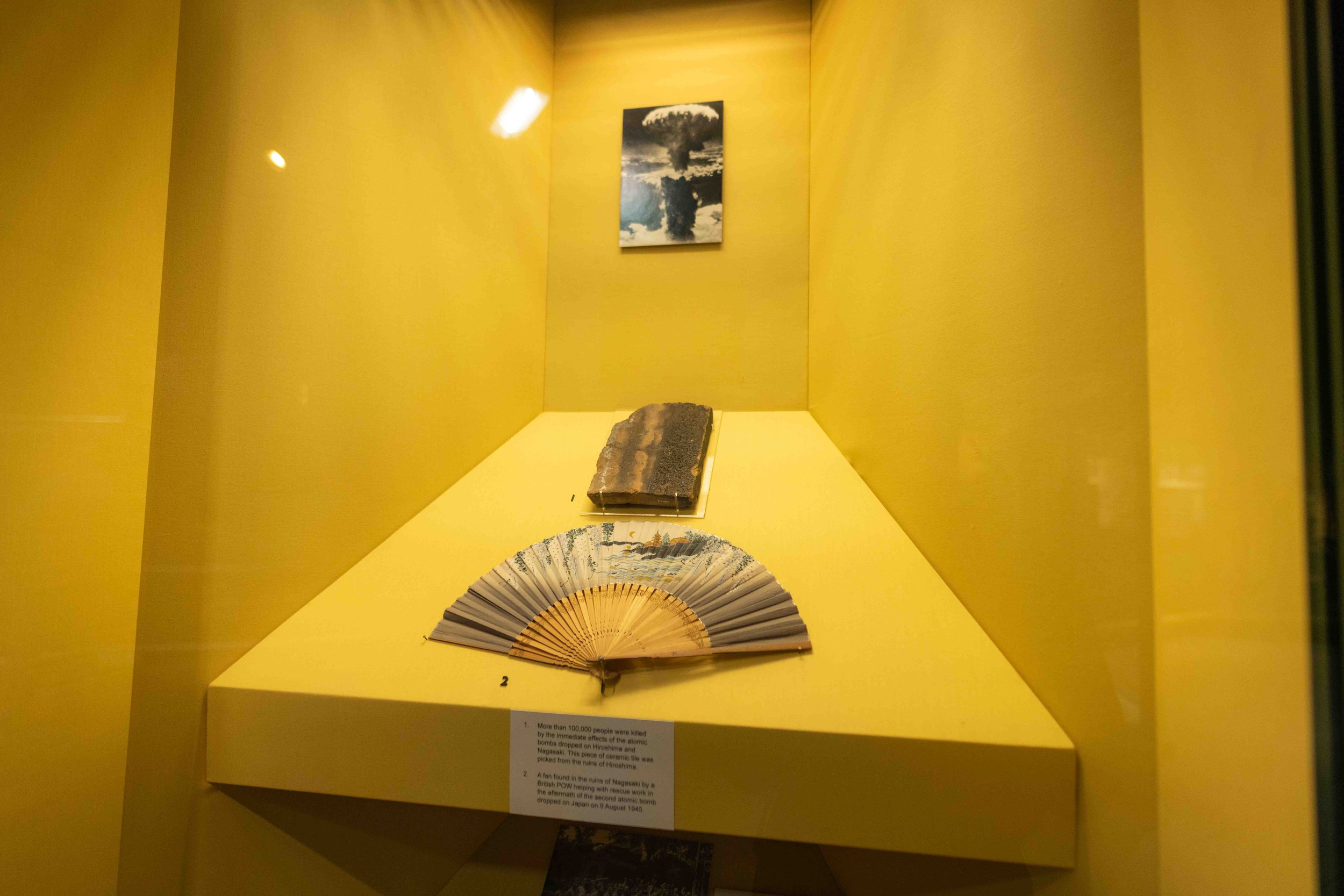IWM Duxford
The exhibits at Duxford allow the public to get up close and personal with the machinery that has been used to wage war for the last century. 1/80s 20mm F2.2 ISO 1250.
The largest air museum in Europe. That’s certainly one way to grab your attention, but what separates Imperial War Museum (IWM) Duxford from other museums is that the site has also played an important part in making history, not just collecting it. Built during the First World War, RAF Duxford saw continuous use until it was rendered obsolete by the arrival of supersonic aircraft in 1961. However, it is most renowned for the role it played during the Second World War, first as a key airfield in the Battle of Britain and then as an American airbase from 1942-1945. Like the other IWMs it is now dedicated to the military history of Britain & the Commonwealth from 1914 to the present day. There’s much more on display than just airplanes and there’s items that take the public through to the recent conflicts that Britain fought in the Middle East.
An English Electric Lightning with a selection of missiles. 1/80s 20mm F2.2 ISO 1250.
The de Havilland DH9 is one of the oldest planes on display at Duxford and they saw action in the First World War as bombers. 1/80s 20mm F2.2 ISO 800.
I could bore you to tears with everything this site has or has experienced but I think I’ll let the photography illustrate my points instead. If you’ve not been before it is well worth a visit, especially when they are hosting an airshow where members of the public can see these historic vehicles in flight. Let me know what catches your eye or whether you have been before in the comments down below.
While we are often relegated to seeing these vehicles in pictures or films, it’s great to get an opportunity to get a true sense of scale at how big they really are. 1/80s 50mm F1.8 ISO 800.
Of particular interest to be was this large light table for viewing processed film. Next to it was also a unit used to process the film. It’s all much simpler these days with digital! 1/80s 50mm F2.2 ISO 800.
Duxford currently have an exhibit showing the evolution of the Spitfire. Perhaps Britain’s most famous and well loved planes. They hold a special place in my heart as my grandfather flew one during the war. 1/80s 20mm F1.8 ISO 500.
Interestingly the early Spitfires only had three propellers… 1/80s 20mm F1.8 ISO 500.
…yet by the end of their lifespan this had grown to five. It was great to be able to compare these differences side-by-side. 1/80s 20mm F1.8 ISO 500.
A large collection of firearms are also on display. 1/80s 50mm F1.8 ISO 1600.
And so is equipment from the most recent conflicts that British troops have participated in. 1/80s 50mm F1.8 ISO 3200.
Duxford has an entire hanger dedicated to land warfare which is found at the point furthest from the entrance. 1/80s 20mm F1.8 ISO 1600.
Attention has been paid to put the exhibits in an environment representative of its use. 1/80s 20mm F1.8 ISO 1600.
A replica tank that was made for the film Saving Private Ryan. 1/80s 20mm F1.8 ISO 4000.
Smaller exhibits cover off other aspects of the conflicts including this one on World War Two Japan. 1/80s 20mm F2.2 ISO 2500.
Surviving items from the atomic bombings of Hiroshima and Nagasaki. 1/80s 20mm F2.2 ISO 1000.
The B-52 Bomber is so large in scale it’s hard to comprehend. There were times when I look at the edge of its wings, thinking it was a difference plane as it was so far away from the fuselage. 1/80s 20mm F2.2 ISO 1000.
The plane I was most keen to see, a Lockheed SR-71 Blackbird. They were retired from used in 1999 but still hold the record for the fastest ever speed obtained by a manned jet aircraft. 1/80s 20mm F2.2 ISO 640.
Amusingly the Blackbird engine reminded me of something out of Podracing in Star Wars. 1/80s 20mm F3.2 ISO 3200.
There are many large planes that are on display outside such as this former commercial airliner. 1/640s 50mm F1.8 ISO 80.
The Battle of Britain exhibit includes planes and wreckage from the Luftwaffe. 1/80s 20mm F4.0 ISO 1000.
This Messerschmitt Bf 109E-3 crash landed during the Battle of Britain on the 30th September 1940. 1/80s 20mm F2.2 ISO 400.
A Gloster Javelin, one of the RAFs earliest jet engine planes. 1/80s 20mm F2.2 ISO 400.
The Hawker Hurricane was a staple of the RAF during the Second World War. 1/125s 50mm F1.8 ISO 320.
A Westland Wasp Helicopter that saw service on the ship HMS Endurance during the Falklands War. 1/125s 50mm F1.8 ISO 1000.
Perhaps my favourite thing on the day the B43 bus affectionately named ‘Ole Bill’. It was used to move troops around during the First World War in France & Belgium. 1/125s 20mm F1.8 ISO 1000.
A closer look which also shows the leather driving gloves left by the steering wheel. A nice touch. 1/125s 50mm F1.8 ISO 1000.
The Westland Sea King is a modern anti-submarine helicopter which still sees service in the RAF and Royal Navy today. 1/125s 20mm F1.8 ISO 1000.
A great aspect about Duxford is that you get to see some of the planes during their restorations. 1/125s 20mm F1.8 ISO 2000.
It’s a unique behind the scenes look at the impressive amount of work required to maintain them. No wonder the entry ticket isn’t cheap! 1/125s 20mm F1.8 ISO 250.
A reconstructions of the Operations Room used during the Battle of Britain. An audio recording gives you a sense of how everything worked. It highlights the importance Duxford had in making history as well as collecting it. 1/125s 20mm F1.8 ISO 800.
If you enjoyed this blog then please consider leaving a tip below.





























